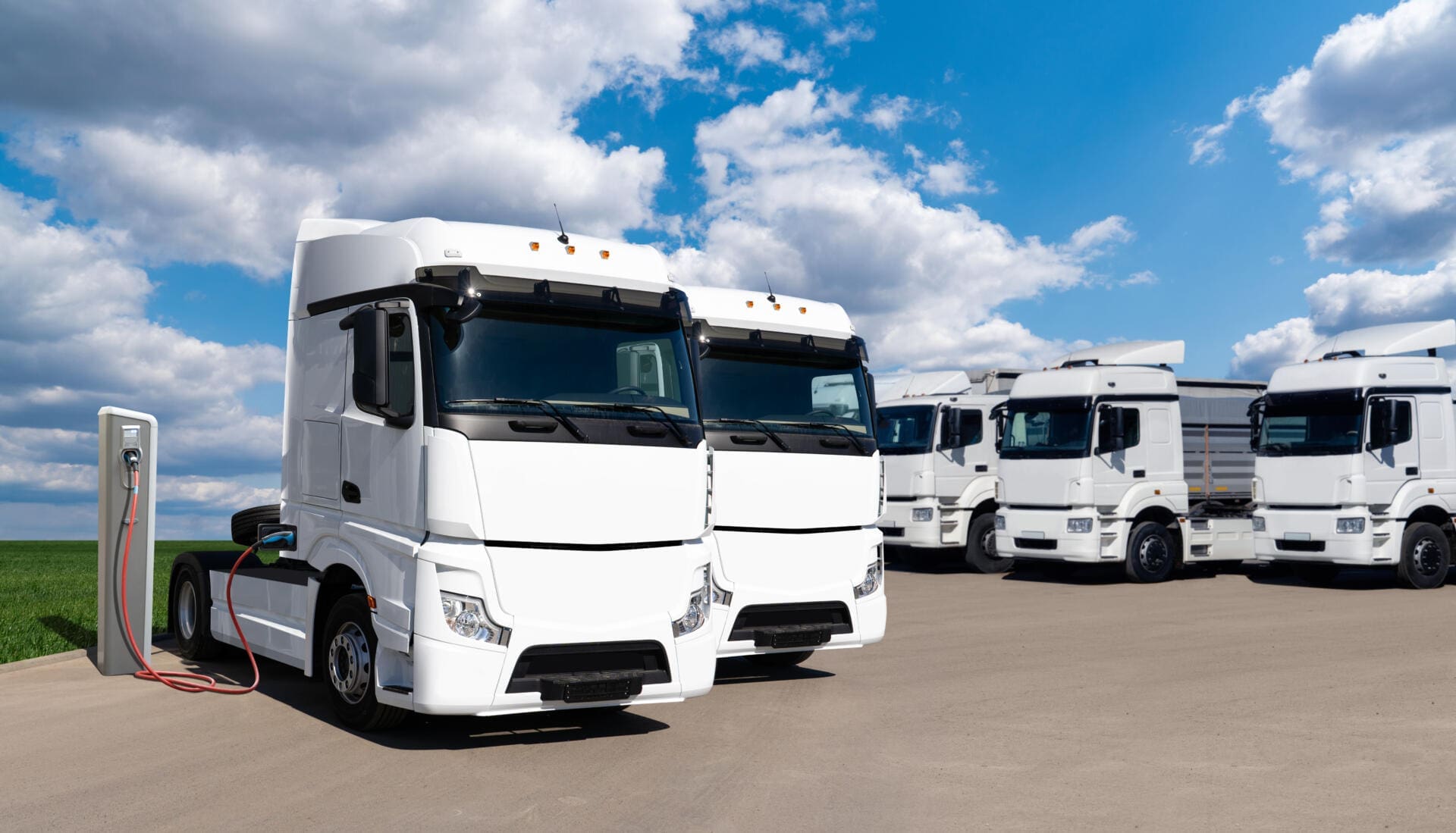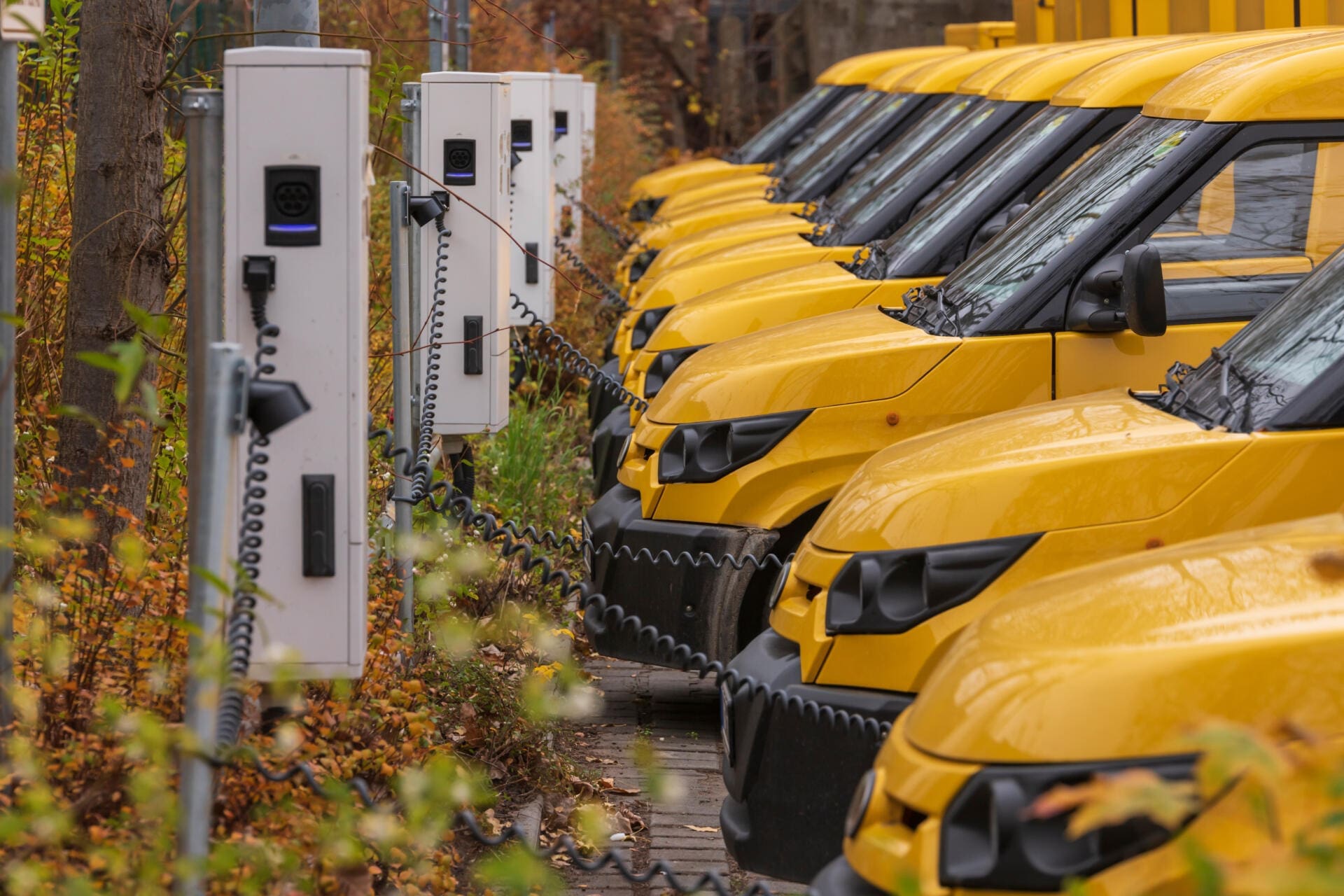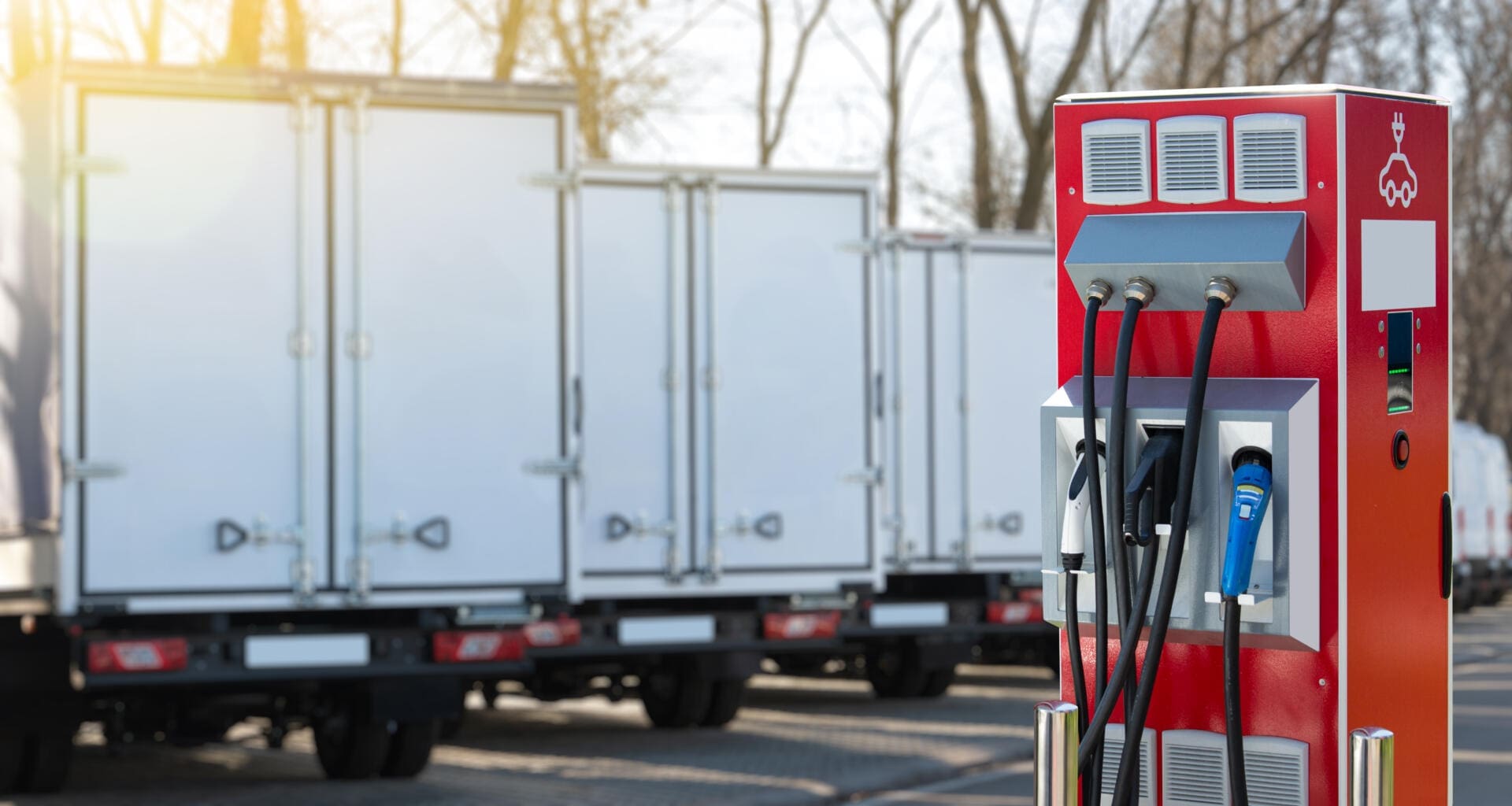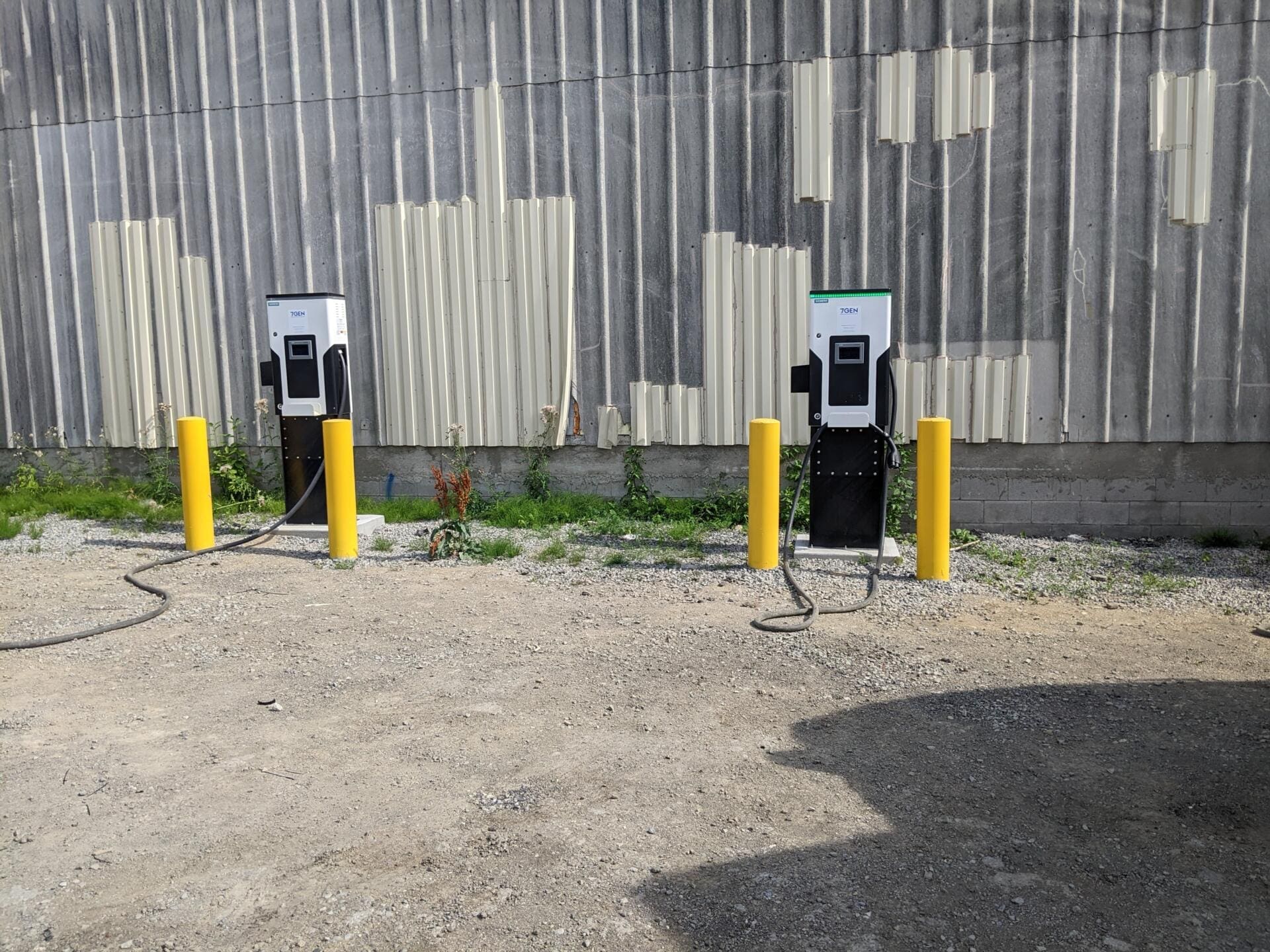Electrification of commercial vehicles has recently grown as EV technology becomes more accessible, governments provide incentives, and companies look to become more environmentally conscious while saving on transportation and diesel costs. As more manufacturers enter the market, demand for not only the vehicles, but an infrastructure to support such vehicles has also risen. However, many companies interested in adopting this technology for their commercial fleets still have a lot to consider about when and how to invest and make this transition.
In this insightful interview SCI’s VP of Transportation, Guy Toksoy, talks with Frans Tjallingii, the CEO and Co-founder of 7Gen to get an insiders view on charging infrastructure deployment and fleet electrification. They discuss the challenges and opportunities in electrifying medium and heavy-duty fleets, including:
- Who should transition their commercial fleet to EV?
- What’s the typical investment horizon for transitioning a fleet to EV?
- What are the pros and cons of a purchase model vs lease model?
- How will the charging infrastructure grow to help support the transition to EV fleets?
Leverage SCI’s end-to-end supply chain solutions for your next fleet transformation and EV charger installation roll-out. We provide warehousing, project management, transportation management service, white glove delivery, and spare parts management through our extensive national FSL network for EV chargers and related parts. Contact us today to learn more.
Read the transcript of the video below:
Introductions:
Guy Toksoy:
Hello everyone, my name is Guy Toksoy and I’m the Vice President of Operations for our transportation, parts, and services, and repair services division of SCI. I’m very excited today to be sitting down for a virtual fireside chat with Frans Tjallingii who is the CEO and co-founder of 7gen and we’re going to chat a little bit about the electrification of the commercial fleet space in Canada. So Frans, welcome and thank you for joining me today in our virtual fireside chat. Could you just introduce yourself and tell us a little bit about who you are and what your company does.
Frans Tjallingii:
It’s great to be here and I’m excited to be with you in this fireside chat. My own background has been in the transportation space but more on the maritime-side so I’ve been in the oil and gas and maritime space for a long time until I decided to become an entrepreneur. Then I built and sold a software company over 2017 and 2018 and decided then to focus on clean technologies. This led me to come together with a few co-founders to start 7gen.
Our focus is commercial medium and heavy duty fleets so everything from last mile logistics to heavy transportation and regional transportation. What we do is we help fleet operators basically from A to Z try to figure out what fleet planning they should do, what vehicles to start with, what to start with, and then what vehicles would work for them, what charging infrastructure would work for them, etc. And then we do turn-key execution of those projects and also the financing so ultimately the end product is that they basically lease from us a vehicle that includes charging and includes everything that they need to start their operations and also starts basically saving money from day one because in many of the applications that we work with it is cheaper today already to use EV.
Guy Toksoy:
We’ll discuss some of those things and get into it a little bit in detail later on hopefully in our chat. Just to start off you know that vehicles are a very passionate subject for me and I’m really excited to chat with you about them today; specifically about the electric vehicles or electrification of the commercial fleets in Canada. But you know this is like the new gold rush; everybody’s talking about electrification and EVs both on the personal vehicle side as well as on the commercial fleet side.
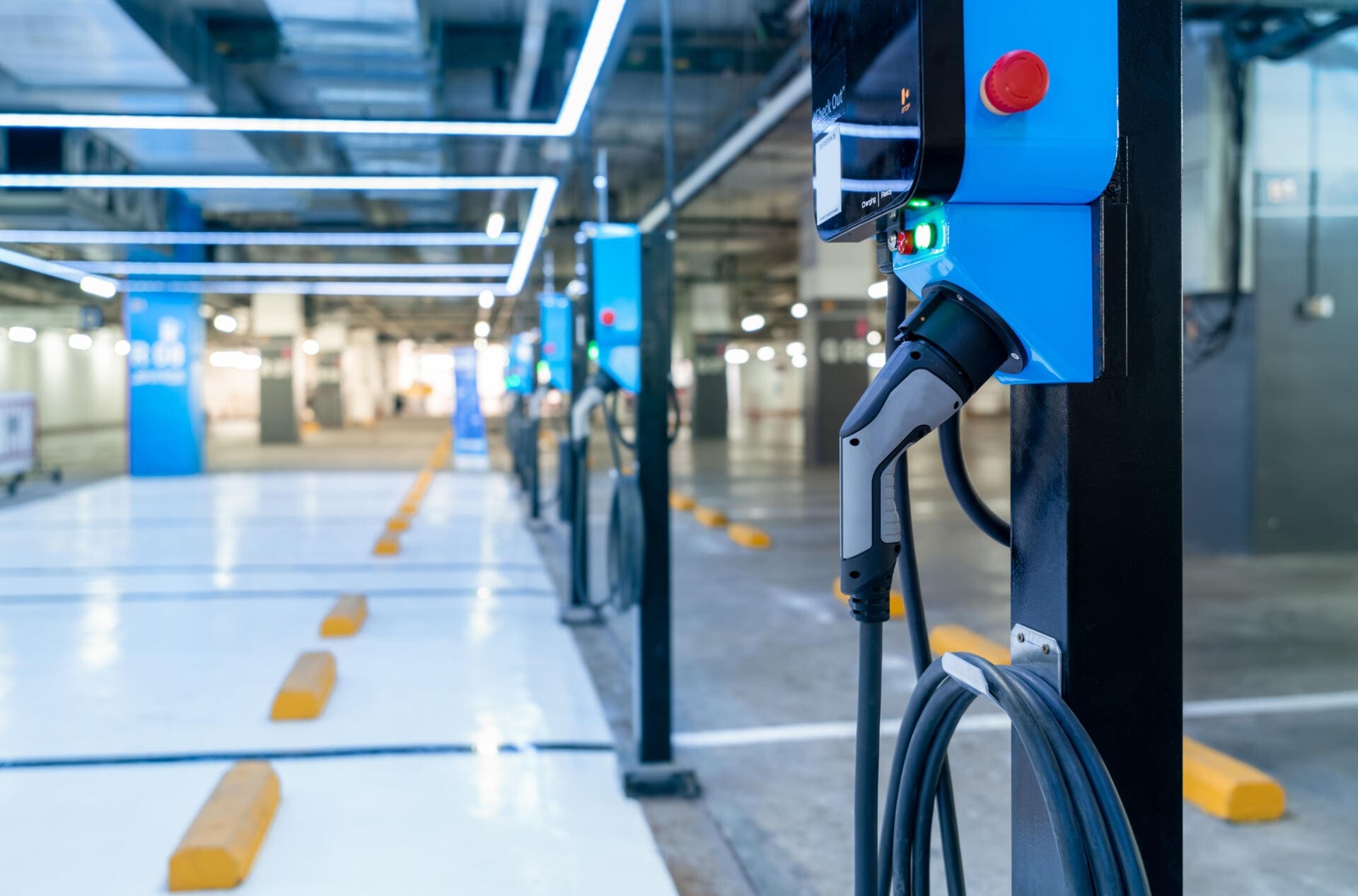
In your opinion what are some of the main reasons why companies are wanting to convert either part or all of their fleets into electric vehicles?
Frans Tjallingii:
I think it’s mainly driven by climate change right now; climate change is the overarching framework by which the fleet transitions are being done. Generally they drive government policy and then government policy drives incentives and those incentives now make it cost effective for operators in many areas of Canada and elsewhere to move to EV.
So EV is a technology that’s been around for many decades, generally hampered by the battery density – the weight of battery you need to haul around to do a certain amount of range which means especially in commercial applications that you’re losing payload. So there’s stuff that you need to do on the battery side. On the other hand once you have an electric vehicle it is super efficient in terms of converting energy to transportation to ultimately movement. So if we’re able to tap into that efficiency, that also drives a lot of advantages for someone moving into EV. So given that the purchase price is manageable, the advantages for an operator on an operation side are that you have very little maintenance and your energy cost goes down because generally the cost of electricity is a lot less than the cost of fuel and you have this very efficient way of converting energy to movement.
How do I know my fleet is a good candidate to go electric?
Guy Toksoy:
I want to talk a little bit about the transition plan. How would I know if my business and the fleet I’m running is a good candidate to go electric? What are some of the items that I would need to look at or my team needs to look at as part of my operations?
Frans Tjallingii:
I’d say you know the best summary is if you’re doing less than about 250 kilometers in a day, and you have the ability to charge overnight, you should seriously look at electrification today. Generally in most vehicle classes there are solutions that are available today with a good reliability that you could start integrating into your sleet.
So I think that’s a rule of thumb, and why am I saying that is for two components. One is the vehicles – the bulk of the commercial vehicles available today have a range of up to about that 250 kilometer mark. And then it’s about your investment that you need to do in charging infrastructure. So if you have only half an hour to charge it’s going to be very hard for you to make that work economically – it’s going to be expensive. If you have 10 hours to charge the charger that you need to install is much smaller and you’re investment in charging infrastructure is going to be a lot smaller.
The joint business case is vehicle and the charging infrastructure required to make that vehicle work you have to sort of see them as one because they jointly determine the capital expenditure that you’re going to have to ultimately get one unit on the road. And then look at your fleet renewal plans. If you’re doing fleet renewal, consider not buying another diesel vehicle. Can you do that vehicle in a EV version? And what adaptations might you need to do to shuffle your fleet around or do route optimizations to allow you to take some EV in.
What is the typical investment horizon?
Guy Toksoy:
What kind of a typical investment horizon should a company look at? And in addition to the investment horizon is it better to take an incremental approach to the fleet electrification or is it better to do a complete fleet replacement?
Frans Tjallingii:
I’d say the actual payback period will vary a lot dependent on your sites, depending on the charging infrastructure, depending on the vehicle, depending on the route, depending on how many kilometers you do, depending on the cost of energy and the utilities of the service area that you’re in, etc. So that’s the sort of the complicated answer, but in actual fact generally after incentives we’re generally looking at a three to seven year payback period. So it’s not clear-cut, but if you’re spending your own capital you’re generally looking within that three to seven year range dependent on where you are.
How does an incremental transition approach work?
Frans Tjallingii:
In terms of an incremental approach, generally what we advise customers is increments, especially if you have a larger fleet. Start with 10 vehicles, which is the maximum for many incentive programs. Try stuff out, get used to it get your drivers used to it, understand where you can create some more commercial opportunities so you can scale up bit by bit.
The other analogy is we’re sort of on iPhone 1 or iPhone 2 in many of these vehicles, but iPhone 3 will come out. The next version will be better, will have better range, will be tested out more, etc. I’d say there’s a number of different reasons to go incremental. On the other side, if you want to create commercial opportunities with going electric now’s the time to do it. We see that governments will clamp down. Prices are coming down bit by bit, but incentives will also come down. So as the stick approach goes up, the carrot approach goes down. That’s sort of how we often see it happening.
So we see the phasing out of internal combustion engines on the light vehicle side by 2035. We believe we will see incremental pressure on commercial operators and anyone to go to zero emission. So at this moment in time when it’s not yet mainstream when not everyone just has it already there is much more opportunity to be had to go to your clients and say hey listen how about we do this together, you give me a better contract, I go electric, we’re both happy. I think now is the time to have those discussions and do that. In two years, three years, I think it will be much more mainstream.
How many vehicles should I convert at once?
Guy Toksoy:
In terms of going with the incremental approach is there a minimum number of vehicles per site that you would recommend? In other words, let’s say a site has 10 vehicles and all of them operate within a 250 kilometer radius on a daily basis and service the customers, is one a good number, is two a better number? Is there a minimum number that people might want to try out and learn from before expanding to the entire fleet?
Frans Tjallingii:
I think here my answer is going to depend on two things. One is your commercial opportunities and what would you like to achieve. If all those 10 vehicles serve one client and that client’s very green, the discussion that we’re going to have is probably a bit different, so that’s one part of it. But there’s nothing wrong with getting one EV in. On the other hand on the charging infrastructure side it might be a bit different. Let’s say if that EV is a class A tractor – like a heavy duty vehicle, you’ll probably install one DC fast charger. The economies of scale of adding 10 DC fast charges versus one DC fast charger are different than from a level 2 charger. On a level 2 charger perspective and a deployment cost you will save by installing 10 level 2 charges at one go or 15 or whatever number on the back end infrastructure. The work required for cabling a whole bunch of stuff that you’re going to save money on by doing 10 rather than one.
And again it depends on the site, it depends on a bunch of things. But ultimately there is more efficiency to be gained in some of the infrastructure work to not do that individually for each charger rather than for a larger group of chargers. So I’d say you can look at them separately almost but at some point if you have 10 charges there then you know the question is would you use them and when are you going to use them. So it’s a chicken and egg discussion that unfortunately leads to the outcome – it depends.
Pros and Cons of purchase model vs lease model:
Guy Toksoy:
We talked a little bit about lease versus buy, knowing that there is a separate investment in charging infrastructure as well as obviously the vehicle itself what are some of the pros and cons of a purchase model versus a lease model?
Ultimately the decision really depends on your philosophy about how you deploy your own capital and what you’re going to use that for. If you’re using it for your own growth or for your own operations or for a whole bunch of things then you may want to have someone else provide the capital for the assets. So that’s where we come in. In general if you’re going to have to go out for financing, often a leasing provider like us can be competitive because there’s no underlying assets that can be financed and have some security.
For example if you’re a company that needs a loan to buy the vehicle then you should also look at an asset finance solution like ourselves. Because that’s probably going to be competitive to going out and getting a loan on your own balance sheet. Not always, but often it is. So having said that there is a difference between a charging infrastructure and the vehicle. The vehicle is much easier to reposition in case of default or in case of anything happening. Charging infrastructure is much harder. So our proposition is we do both together, and we’re very competitive at that, providing ultimately a better solution to our clients.
How will the services industry help support the growth of EV and EV Infrastructure?
Guy Toksoy:
We know that there’s a lot of investment that’s pouring into the EV space and in particular around the charging infrastructure. When the investment starts to pour in and we start seeing more and more charging stations popping up around the country, how does industry or services industry help support that growth?
Frans Tjallingii:
I’d say at this moment everything happens through local contractors. We have a network across the country of vetted contractors but they’re generally local. So it’s hard to find someone that we work with in Ontario that will also do work in BC, and generally they also support us on the maintenance side in terms of having people on a call-up basis to come and intervene. I think that market will evolve. We’ll see players maybe such as yourself ultimately scaling up to become that larger scale service provider that may be required in the space to really get to the next level. Because that’s the evolution that will need to take place moving from a more piecemeal solution to something that’s more holistic.
Guy Toksoy:
What you’re talking about is more local partners that you’re utilizing or that you’re seeing being utilized for the delivery installation and servicing of charging networks but if you were to scale those up at a level that’s going to be needed over the next five, ten years you’re you should be tapping into more global players or bigger players that help clients scale up quickly and build that infrastructure.
Frans Tjallingii:
I think we’re definitely open to that. We’re looking to scale fast. We’re a recipient of some of that money flowing into the space and ultimately we’re looking to build this at scale so we’re constantly looking for partners to scale with.
SCI’s EV Infrastructure Services Solution
Frans Tjallingii:
So Guy, we spoke a bit about where this charging infrastructure is going to go and ultimately I foresee that we’ll have a lot of distributed charging infrastructure in a number of different
locations. I know SCI has some knowledge and skills that you’re thinking about bringing to this EV space. Can you talk a bit more about what that looks like?
Guy Toksoy:
Yes. What SCI does is help our client base with delivery and installation of different types of commercial solutions whether they are you know automatic bank machines, or parcel lockers,
or kiosks in various locations, and our white glove fleet is heavily into providing this type of a service of both delivering those products into the locations that they’re used in, but also installation and further maintaining them; repair maintenance services and critical parts services, etc. So it’s a natural progression for SCI to look into the electric vehicle space and particularly on the infrastructure related to the charging networks and offer some services that we see a very strong parallel to what we’re doing currently and so we hope to get more and more engaged with our client base in terms of helping them deliver, install, and maintain the charging networks across the country.
Well Frans I’ve learned a lot from our conversation today. Is there anything that we didn’t cover that might be useful information to fleet owners that are considering electrification that you want to maybe touch upon?
Frans Tjallingii:
Yes, I’d say many people are seeing this as – oh we’ll worry about it next year or the year after or the year after when someone forces us. I think if you’re in a segment where you fall within an operating range of 250 kilometers per day and overnight charging as a possibility you should. But even if you’re doing more and you have less time, you have to start looking at it now. I think now is the time when you can create some commercial opportunity around it. Now’s the time to already learn, because ultimately the battery electric vehicle is more efficient than the diesel version.
Guy Toksoy:
Well thanks again, I learned a lot. Thanks for sharing your thoughts and expertise in this area of electrification of commercial fleets, and hopefully for people who are viewing this it will help them make a decision in terms of which direction they’re going on how fast they’re going. I think the direction is pretty much set; everybody’s going to be going in the EV space at some point over the next five years, ten years, 15 years max so it’s happening. It’s just a question of how do we get there and what help companies like your company and companies like my company
SCI can help players get there, so thanks again.
Frans Tjallingii:
Yeah my pleasure.
